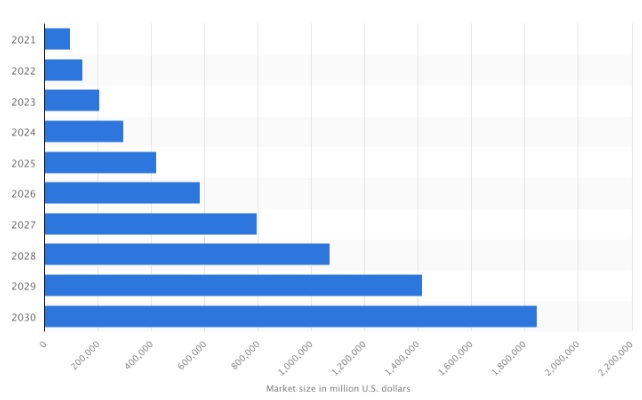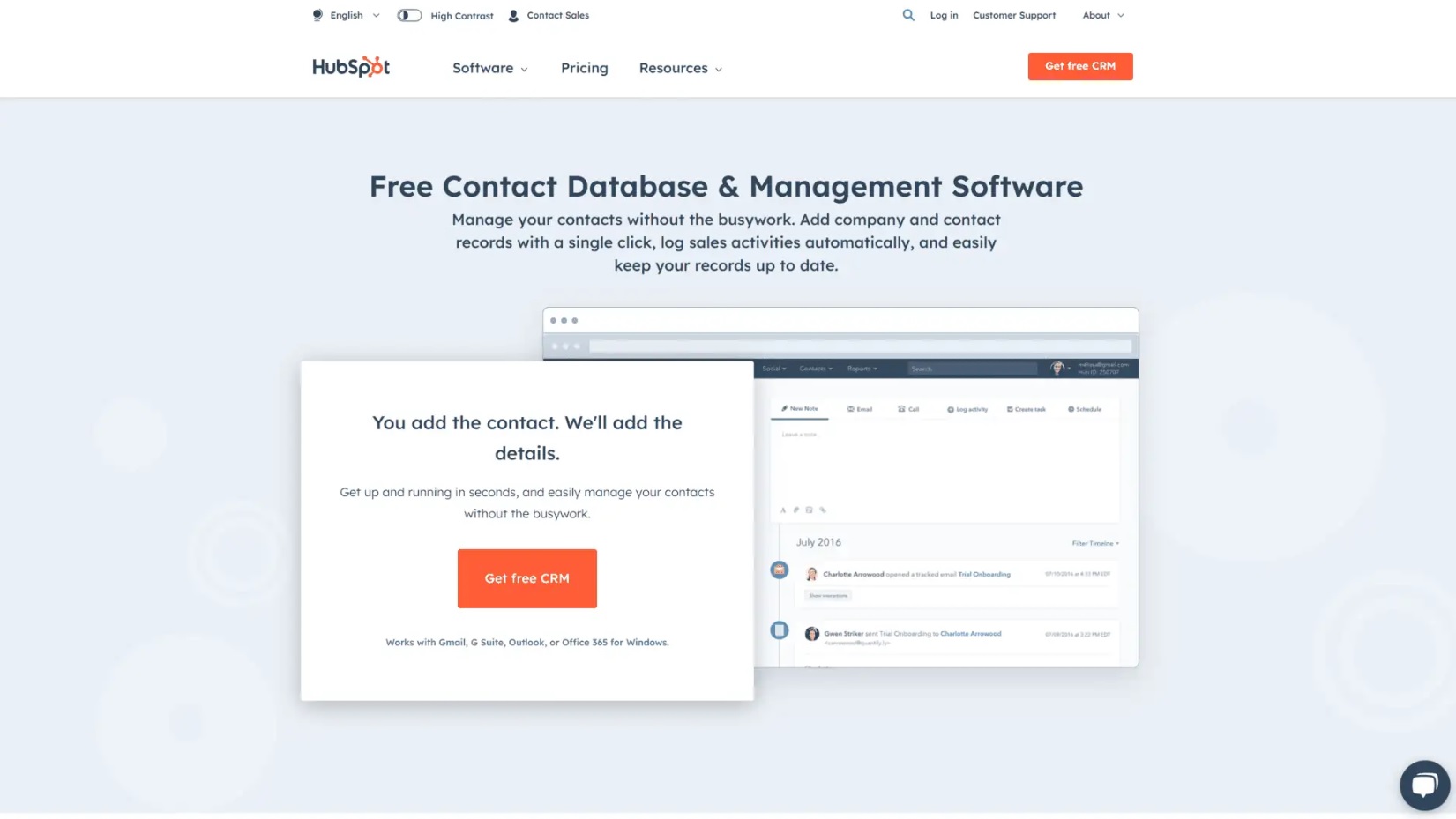
Inês Tito
Copywriter
Every day, we are bombarded with unsolicited advertisements for products and services that do not interest us. Brands that adopt such an intrusive strategy make us feel like we are just a number.
Eventually, we turn away and look for brands that make us feel unique. After all, who doesn’t like to feel special?

Inês Tito
Copywriter
Every day, we are bombarded with unsolicited advertisements for products and services that do not interest us. Brands that adopt such an intrusive strategy make us feel like we are just a number.
Eventually, we turn away and look for brands that make us feel unique. After all, who doesn’t like to feel special?
Differentiating the target audience to better understand customers has proven to be a successful strategy. Therefore, issues such as segmentation and personalization of marketing campaigns play a key role.
Do you want to build customer loyalty? Let’s see how segmentation in inbound marketing can help you.
Inbound vs. Outbound marketing
Over the last hundred years, society has undergone dramatic changes that have affected our perception of the world. The same has happened with marketing.
As society has evolved, new methods to promote products and services have emerged. Originally, brands relied on traditional outbound marketing strategies consisting of newspaper and radio adverts or direct customer contact.
 Source: Georgia Exhibits, Coca-Cola advert published in a newspaper in the early 20th century
Source: Georgia Exhibits, Coca-Cola advert published in a newspaper in the early 20th century
However, this customer demand has lost its effectiveness. The wide range of products and services on offer, as well as their excessive promotion, has changed customer perception. Therefore, it has become imperative to find new ways to attract the customer without harassing them.
Thus, inbound marketing strategies emerged. The goal is to attract and engage the customer through content that interests them and promotes brand discovery. The methods are varied and, these days, the internet is the place where everyone wants to be.
How to attract customers in the digital world? Through customer segmentation and an effective content strategy!
“Divide and conquer”
Julius Caesar was unaware of the existence of marketing. However, his premise fits like a glove!
Julius Caesar was unaware of the existence of marketing. However, his premise fits like a glove!
Customer segmentation is a way of dividing the target audience into small groups that have common characteristics such as age, gender, behavior or interests. In this way, marketers develop more relevant and effective campaigns.
Through customer segmentation, brands can improve the effectiveness of their message, promote the personalization of their campaigns and raise the quality of customer service.
 Source: Freepik
Source: Freepik
This does not mean that we are labelling customers. It’s about learning more about their preferences to deliver content that interests them. This personalisation approach gives companies a competitive edge and allows them to generate better quality leads.
That’s why brands usually use one (or more) methods to segment their target audience based on common characteristics:
- Demographics – age, gender, income, education level, nationality or marital status;
- Geography – location by country, region or city;
- Psychology – personality, values or interests;
- Technology – mobile devices, computers, apps or software;
- Behaviour – frequent trends and behaviours, knowledge about the brand and products or services;
- Positioning in the customer journey – discovery, consideration, decision.
Once this process is complete, it will be easier to develop messages focussed on the needs and desires of each segment.
The impact of segmentation on inbound marketing strategy
In theory, the concept of “divide and conquer” seems to be the best strategy. But is segmentation the right choice?
Let’s see…
- Segmented email campaigns get 14% more reads and 100% more clicks than non-segmented campaigns.
- Segmented campaigns have a 77% higher ROI.
- Companies that focus on segmentation are 60% more likely to understand their customers.
- Promotes cost savings in customer acquisition.
- 49% of consumers admit to impulse buying when they receive personalized messages.
- It leads to an increase in return on sales of up to 5%.
- Identifies high-potential niche markets.
In short, segmentation strategies make it possible to personalise contact with the customer, present them with what they are looking for and get them to buy the products and services they want. Ultimately, brands are able to develop customer-focused products, differentiate themselves from the competition and improve customer service, promoting customer loyalty.
Now another question arises… What is the best way to achieve these benefits?
The role of artificial intelligence in customer segmentation
Atualmente, a inteligência artificial (IA) está presente por todo o lado, desde o atendimento ao cliente até carros ou tradutores automáticos. Quase toda a tecnologia que utilizamos apresenta algoritmos de IA.
Como seria de esperar, os profissionais de marketing não perderam tempo ao identificar as potencialidades desta ferramenta.
A IA na segmentação de clientes
O volume de informação online cresce exponencialmente a cada segundo. Por esse motivo, é impossível para o comum mortal monitorizar tudo.
 Source: Freepik
Source: Freepik
For this reason, more than 61% of marketers report using AI in their daily activities. In addition, 44% use AI in content creation. Still, they do not hide their belief that artificial intelligence could outperform them.
An intriguing paradox, no?
This behavior of professionals is essentially due to the advantages that artificial intelligence offers in the short term:
- It allows target audience segmentation 100 times faster than a human.
- It predicts with 90% more accuracy the customers who abandon the brand.
- Ensures 80% more accurate personalization of marketing campaigns.
- Increases customer lifecycle by 25%.
- Reduces marketing strategy costs by 30%.
In general terms, segmentation through artificial intelligence tools allows to improve marketing campaigns. How?
AI can manage colossal volumes of data, identify patterns and trends, and establish correlations that would easily go unnoticed by humans. This allows professionals to deepen their understanding of their customers.
In addition, AI enables the automation of customer segmentation by analyzing data in real-time. For professionals, this means they can monitor changes in customer behavior patterns at all times. In this way, they can adapt their marketing strategy according to perceived changes.
AI tools useful in customer segmentation
Investment in artificial intelligence has increased in recent years. Not only because of its application in the most varied business areas but also because of the specificity of each one. Source: HubSpot, 20 Artificial Intelligence Statistics that Marketers Need to Know in 2023
Source: HubSpot, 20 Artificial Intelligence Statistics that Marketers Need to Know in 2023
Thus, AI tools (some new and some improved) are emerging to make the daily life of marketers easier.
Google Analytics
This is considered by some to be the best tool for customer segmentation.
 Fonte: Google Analytics
Fonte: Google Analytics
Google Analytics is a free platform developed by Google to collect data on websites and applications. Through the data collected, brands get information about the number of visitors, their behavior on the page or the type of device used.
Google Analytics provides some suggestions to segment the target audience quickly. However, you can always customize each group according to your needs.
It also allows you to filter data to focus all your attention on specific users. This makes it possible to understand why some pages have higher bounce rates than others.
But the advantages of this tool do not stop there. Its interface is intuitive and all functionalities can be learnt through the Google Analytics Academy. In addition, it can be easily integrated with other platforms, such as WordPress, for example.
However, this powerful tool can become incomprehensible to those who do not have the necessary technical knowledge. In addition, the large volume of data collected can lead to confusion when not properly handled.
HubSpot
In the world of marketing, HubSpot needs no introduction. This inbound marketing and software company has developed an essential tool for professionals in this field.
 Source: HubSpot
Source: HubSpot
Its CRM (Customer Relationship Management) platform seeks to unite brands and customers. Thus, HubSpot allows you to segment customers by categorizing contact lists. Another option is event-based segmentation, which allows you to localize key customers in specific areas.
To use this tool, simply select your segmentation criteria, collect contact data and create segmented customer lists. From here, you can create personalized content to reach customers at the exact moment in their journey.
In this sense, the main advantages of HubSpot’s software are the ability to generate campaigns focused on each segment and to increase customer satisfaction and loyalty. However, this software is not very flexible and its implementation is challenging.
Not to be forgotten…
Customer segmentation is one of the best options to strengthen your inbound marketing strategy.
By presenting content targeted to the right customer, you will improve the customer experience and increase conversions. That’s why we leave you with some important tips:
- Segmenting without exaggeration – when segmenting the target audience we run the risk of focusing on too many details and creating groups that are too restrictive. Therefore, it is important to create segments that are both small and comprehensive.
- Continuous improvement – as we have seen, the information collected is constantly changing. Therefore, it is essential to monitor the segmentation criteria and adjust as necessary.
- Set clear objectives – the same goes for the objectives that underpin the whole strategy. Testing and analyzing the results is the best method to segment customers according to the brand’s needs.
Meeting all these requirements is a real challenge. Hence the importance of artificial intelligence. The technology exists and is here to be utilized. Those who don’t will be wasting time and money.